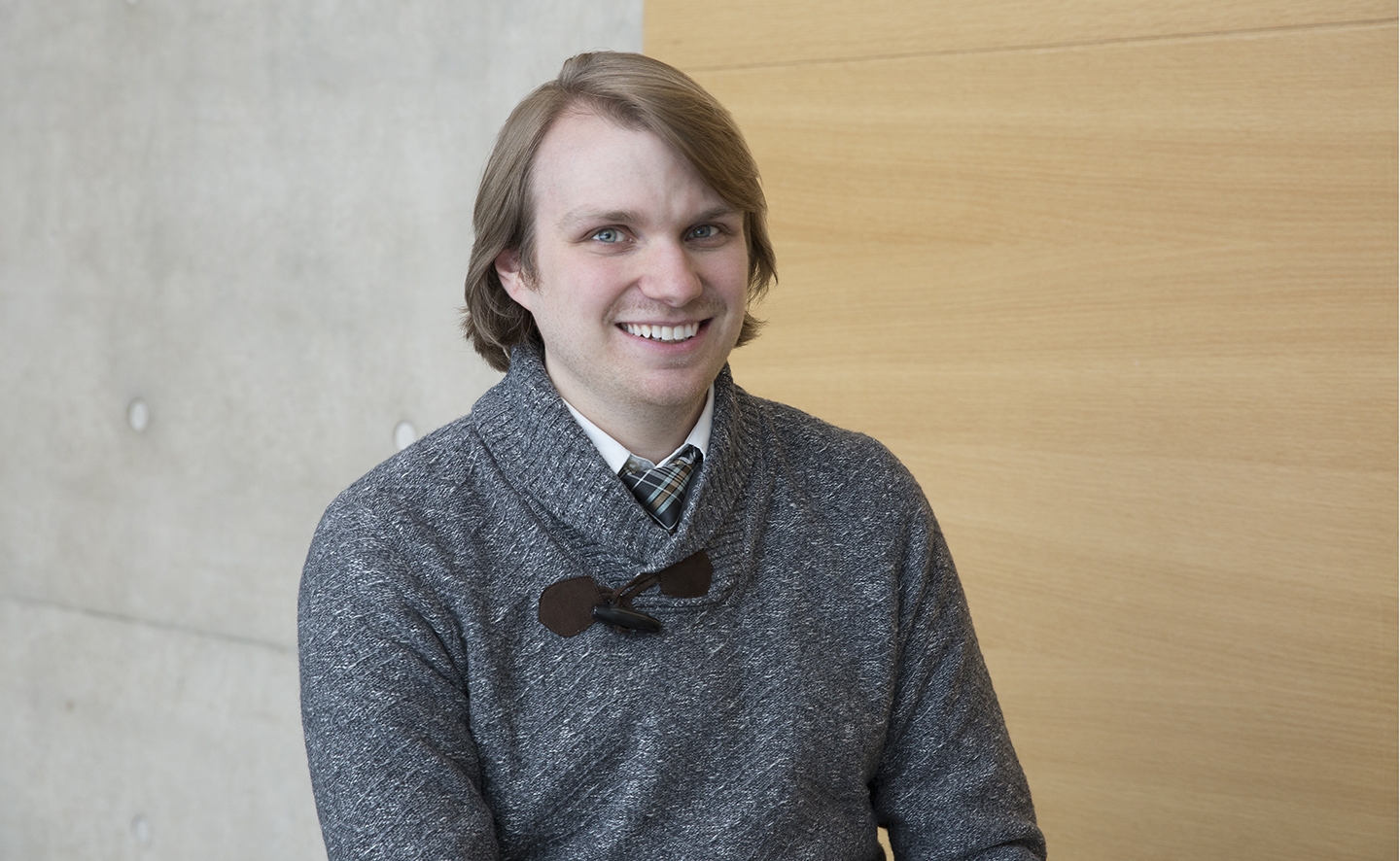Since beginning as an intern in 2010, Christopher Bruce has moved through every education position the Grand Rapids Art Museum has had to offer. Bruce said that experience gives him an interesting perspective for his new role as director of learning and creativity, as he’s seen what works, what doesn’t and why they tried it all. In an empty GRAM — with staff quietly setting up the new Prints and Processes and Finders Keepers: West Michigan Collects exhibitions — Revue sat down with Bruce to discuss what the museum has in store for 2017.
Can you tell me about what your new role means for the organization?
Previously, we had a Learning and Audience Engagement department. Since I’ve come on board, we’ve transitioned to Learning and Creativity, which is to focus on our new mission. On Jan. 1, we launched a new mission: Connecting people through art, creativity and design. We’ve always focused on education here at the museum, so learning is not going to go anywhere in that process.
How is this new mission different?
With the new mission, we’re also focusing on people. We’ve always wanted to engage the widest audience we possibly could, but with this, we’re committing to that right at the forefront and making it apparent to everyone who walks through our doors that you have value here.
How do you anticipate the new mission playing out?
When we launched the mission, we also launched our five-year strategic plan, GRAM Vision 2021. That plan is really going to allow us to push toward our vision of turning West Michigan into the most creative community in the world. As part of that, we’re looking at what creativity and design are, and how can everyone find a point of connection with these very broad themes. It’s making them tangible and relatable.
So it’s about bringing more of the community in?
Yes. Regardless of what sub-communities you may identify with, we want everyone to know the GRAM is here for them.
Is that going to be done through how you choose new exhibitions or through new programs?
All of the above. It’s through what art comes here, through the programs we create to connect that art to the individual guests — everything we do is going to connect people in one way or another. That’s the point of this mission, to focus GRAM to make sure we are doing what we’re supposed to be doing: Connecting people to the objects you can see within our walls. We have programs for everyone; for the elderly, adults, birthday parties, groups of kids. If you can find a group of people, we can find a way to engage them.
Do you have any goals or aspirations for your position?
We’ve been trying to figure out that very question. We’re approaching me in this position and the transition overall as an overall opportunity to look forward, try new things and take some risks. One goal that I personally have is that regardless of who you are or when you come to this institution, there will be some sort of interactive experience for you to engage in authentically.
Are those experiences not available now?
Right now we offer wonderful drop-in programs, but they’re limited to between 1-4 p.m. on Saturdays. We want something happening all the time, some hands-on interactive exploration.
What are you most excited for in 2017?
For me, it’s not as specific as one exhibition. I shudder to say that because it sounds like a cliche, but what’s really interesting about 2017 is the extreme variety of exhibitions and programs we have coming. We’re trying things we’ve never done before, such as Finders Keepers, an exhibition of collections that are not from art museums and not for the most part classified as traditional artistic objects.
How does Finders Keepers then fit with the GRAM, being an art museum?
It’s focusing on this notion that as an institution, collecting is at the very heart and soul of this building. That is an idea that transcends industries and backgrounds. At some point in our history, we’ve all been compelled to collect something. … But then we’re also bringing in Andy Warhol’s collection later — it’s this high-class, world-famous artist, compared to a pair of young kids’ Star Wars figure collections (in Finders Keepers). It’s a risk. We don’t know how people are going to react.
The new presidential administration has talked about cutting the National Endowment for the Arts (NEA). Would that affect your work in any way?
We do have some programs that are funded by the NEA. We have a program called Language Artists that teaches literacy to third grade students. It’s a program that’s existed for going on seven years now, and three of those years have been funded by the NEA. The program will not go away if the endowment goes away though. There are plenty of others who are willing to help us out and that program has merit that is very easy to convey.
When it comes to the GRAM, what keeps you up at night?
Honestly, things are going really well. I’ve been here almost seven years now and I can honestly say that I am the most excited about what GRAM is doing and the direction we’re taking now than I have ever been. We have some big, bold ideas, and we have a tendency when we have an idea to make it happen.





